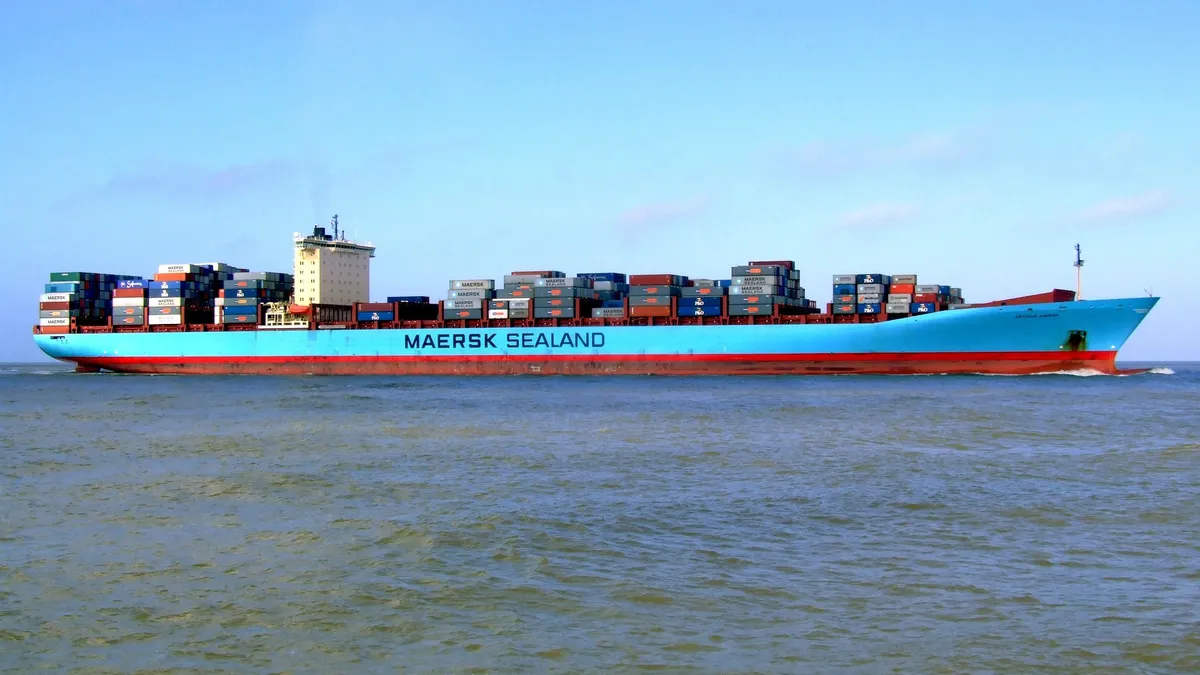Dive Brief:
- A.P. Moller-Maersk joined the Global Industry Alliance to Support Low Carbon Shipping (GIA), a public-private partnership "tackling the challenges of decarbonizing the shipping sector," according to a flyer from the alliance.
- With the addition of Maersk, GIA now has 18 members, including the Port of Rotterdam, Panama Canal Authority, Royal Caribbean Cruises and a number of oil and engineering companies. Maersk and MSC are the only top 10 container shipping lines in the alliance.
- The GIA focuses on five areas of collaboration: energy efficient technologies, low and zero carbon fuels, ports, digitalization and the human element.
Dive Insight:
The shipping industry as a whole is transitioning toward a lower carbon footprint, whether the motivation is a more sustainable business model or the mandatory International Maritime Organization (IMO) low-sulfur regulations taking effect at the beginning of 2020.
Maersk, often seen as a leader in innovation among carriers, took its sustainability goals a step further with a pledge to reach net zero carbon emissions by 2050. At the time of its announcement, Maersk said the biggest challenge to achieving net zero emissions is the infrastructure of the shipping industry. The carrier called for development of new vessels that enable low-carbon transport.
Maersk did not respond by press time to questions on what specific advantages it sees in joining GIA, but the goals of the alliance appear to be in line with many of Maersk's other partnerships promoting sustainable solutions.
"A new norm is developing that companies use their businesses to create and drive positive impact — alone and in particular in partnership with others. A.P. Moller - Maersk welcomes this development," the carrier states on its website.
Partners include the UN Global Compact, the Clean Cargo Working Group, the Global Logistics Emissions Council, Caring for Climate and the Forum for the Future's Sustainable Shipping Initiative, among others.
The GIA likely will need buy-in from a number of carriers if it wants to bring about significant change to emissions in the shipping sector. The largest and second largest carriers are on board — the question is whether the remaining top eight see the value in joining.














